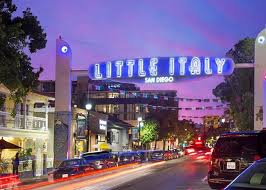Little Italy becomes Little Albanian-Mexican Italy

New York: On a cool sunny weekday afternoon, the crowds were out in Little Italy. In the two outdoor European-style cafes that anchor either end of Arthur Avenue, in the Belmont Section of the Bronx, tourists and locals sat outside, sipping espresso, smoking and chatting away.
At Luna Cafe, just past the giant Italian flag painted in the intersection, the red Albanian flag was flying, while men smoked hookah in the plastic-covered outdoor area. Over at Prince Coffee House, four blocks away, regulars chatted in Albanian. The only Italians were the third- and fourth-generation shoppers from the suburbs, stopping in for a coffee break between mozzarella and soppressata runs in the nearby stores.
“I wouldn’t call it Little Albania,” said Florian Lota, 21, a recent immigrant from Kosovo who works the counter at Prince. “It’s more like Big Albania.”
For decades, the Little Italys of the city have been shrinking as immigrant families from the turn of the last century move up and out of New York. But a different kind of contraction has taken place in the Belmont section of the Bronx. There, the Italian diaspora has been slowly replaced with immigration from the Baltic States and Latin America, which is actually helping to preserve Italian culture in the neighborhood.
Belmont’s Little Italy is by far the most intact and authentic — whatever that means anymore — of the city’s Little Italys. The closest that downtown’s Little Italy has gotten to “authenticity” was a few months back when Netflix, to promote Martin Scorsese’s “The Irishman,” dressed it up to look like it was still the 1970s. At last count, Italians in Manhattan’s Little Italy accounted for just 5 percent of the population. Bensonhurst, in Brooklyn, was long ago subsumed by that borough’s Chinatown. East Harlem and even Staten Island’s Italian community have given way to more recent immigrants.
Belmont today is a far cry from its insulated, Mafia-protected racially charged past made famous by movies like “A Bronx Tale.” But the Bronx’s Little Italy, encompassing about 40 square blocks, has thrived partly because of its influx of new ethnically diverse immigrants, not in spite of them.
“It’s a cliché, but we’re all one big happy family up here,” said Frank Franz, the treasurer of the Belmont Business Improvement District, one of only two board members who still lives in the borough. “I’m not saying we don’t fight with one another. But we don’t fight over who we are, but because we got screwed by somebody. I mean, it happens.”
Because of its proximity to Italy across the Adriatic Sea, Albania has had a strong relationship with its neighbor for centuries. In the Middle Ages, Albanians settled in Southern Italy and became known as the Arbereshe, creating their own Albanian-Italian dialects, which are still spoken in small pockets throughout Italy.
During the Communist period, Albanians picked up the language because Italian television was all that was broadcast. After the collapse of Soviet Union and the start of the Kosovo War, Italy was an entry point to the west for ethnic Albanians fleeing persecution. Because they understood Italian, they have had a smooth transition into Little Italy in the Bronx and are starting to follow the Italians before them into the suburbs.
While it’s nothing new that Albanians and Mexicans are working behind the scenes in Belmont, those new immigrants are now also fronting their own shops, filling the gaps left by the Italians who’ve moved, and helping to keep the neighborhood as lively as it’s ever been.
Ramiz Kukaj, an ethnic Albanian from Kosovo who moved here from Italy, operated a pizzeria on 204th Street in the Norwood neighborhood, flying under the radar. Then one day about a decade ago his 15-year-old son came home and said his Greek friends had taken him to a Greek restaurant, his Italian friends took him to an Italian restaurant.
“He said, ‘Daddy, I want to take my friends to an Albanian restaurant, can you tell me one?’ And I said, ‘Oh, my God.’ I was not able to provide him with that. I felt very bad. That’s when I started thinking about it. I have to do something.”
The neighborhood’s main attraction is still the Italian food. According to Little Italy’s business improvement district, of the 350 businesses in the area, 63 represent Italy and make a majority of the money — which at last count was $300 million a year in retail alone. Though many of the Italian shops and restaurants are still owned by the original families (most of them live outside the neighborhood) not all are owned by Italians.
Michaelangelo’s restaurant flies the Italian flag, but its owners are Albanian. Tony and Tina’s Pizzeria not only serves slices and garlic knots but also offers traditional Albanian burek — flaky pastry filled with meat. The local cigar shop and the wine store with one of the best selections of Italian wines in the city are both owned by Latinos.





